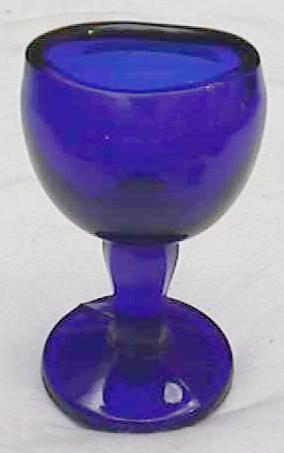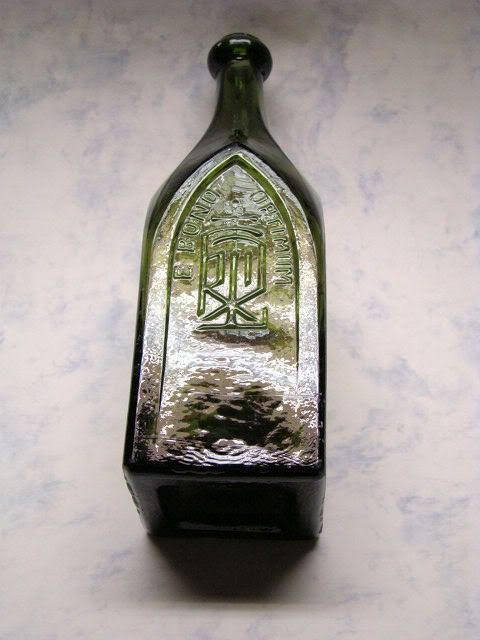eddy1V
Senior Member
here some of my finds from my bottle digging world,
i have actualy been bottle digging longer than metal detecting.
i love the old victorian sites, but in the last few years, i have given my attention to the later sites 1920s/30s. some diggers frown upon these later sites. but i find them facinating, the art deco period was such a colourful era.
the site i am digging at present, which is 1920s, is a huge site , ive been digging it for the last 3 years and have hardly scratched the surface .
its 15 feet deep in some areas.
the reason i dont get out until spring is, the weeds are so high , i can get in, without being seen, not that its an illegal to dig it, but the less eyes that see it the better.
so roll on the spring ,,and out will come shovels and fork,
the first two videos i put together for you tube.
the first is a victorian site . which is a grulling dig. at the best of times.
the second is from the 20s site.
hope u enjoy
http://www.youtube.com/watch?v=x6aZnkAnJvI
http://www.youtube.com/watch?v=JdpgxyfmwI8
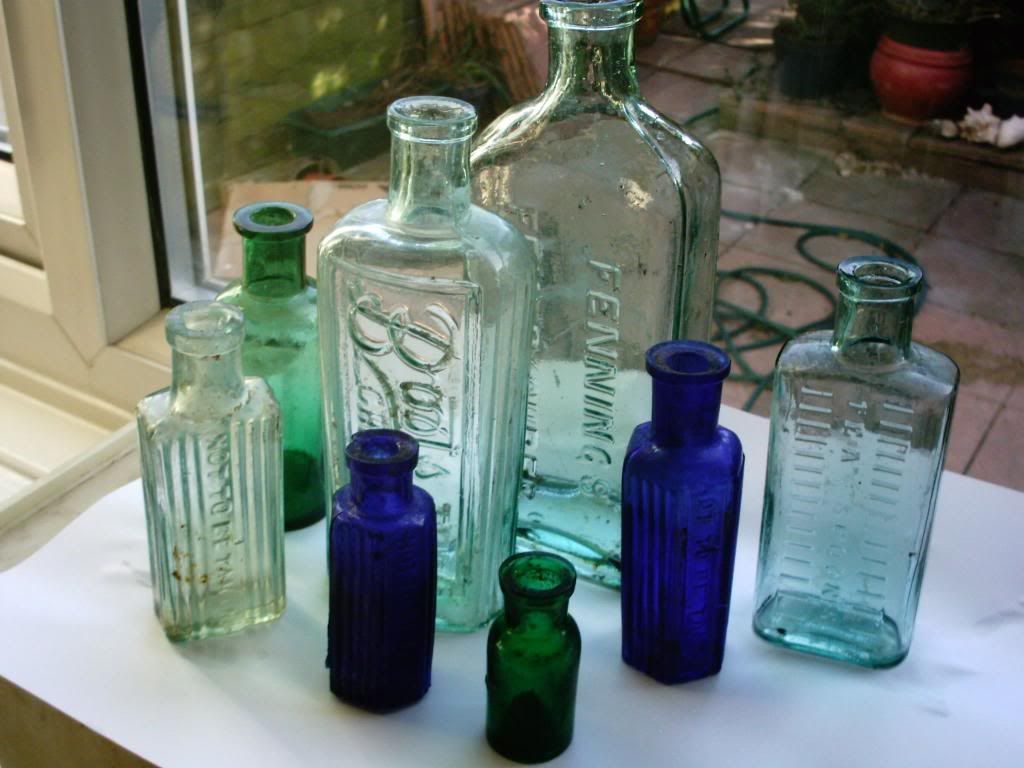



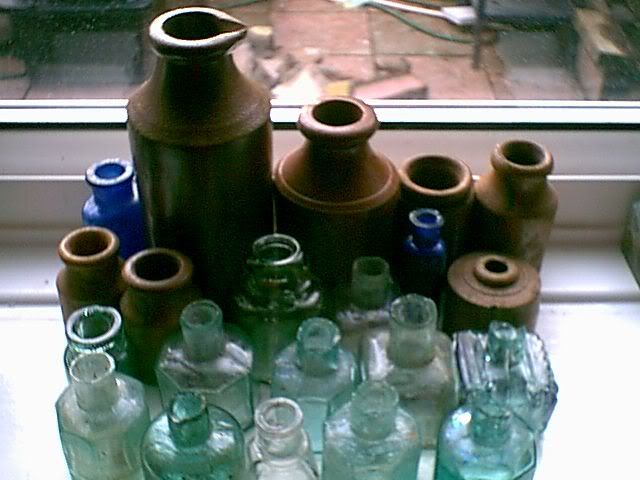
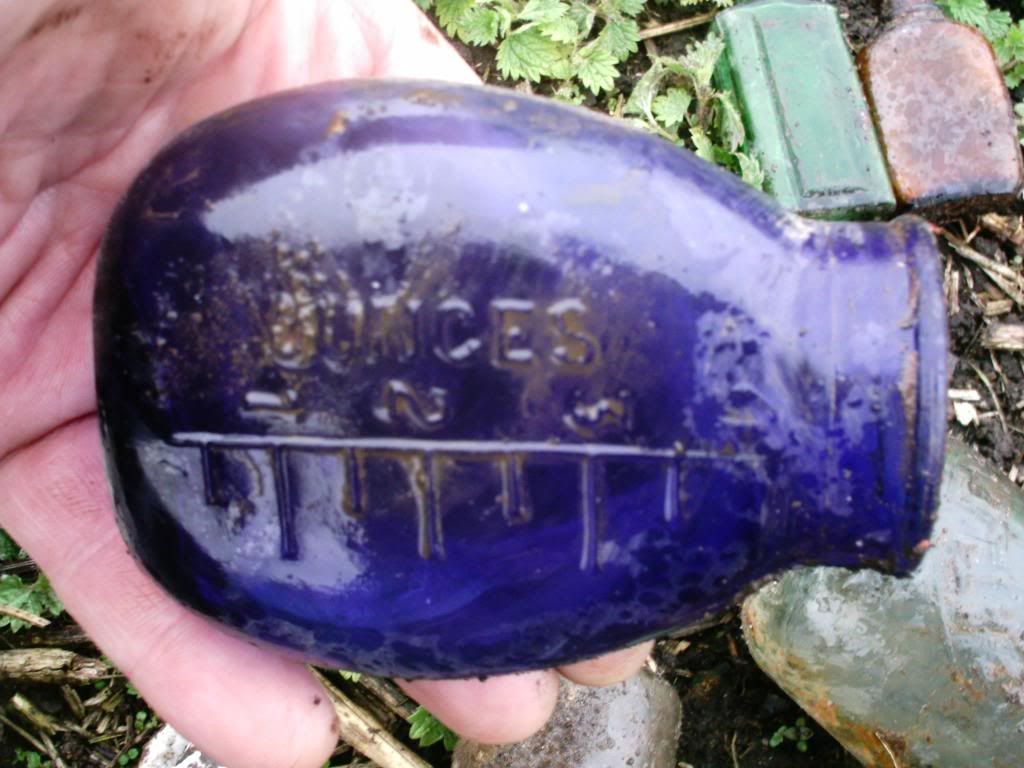

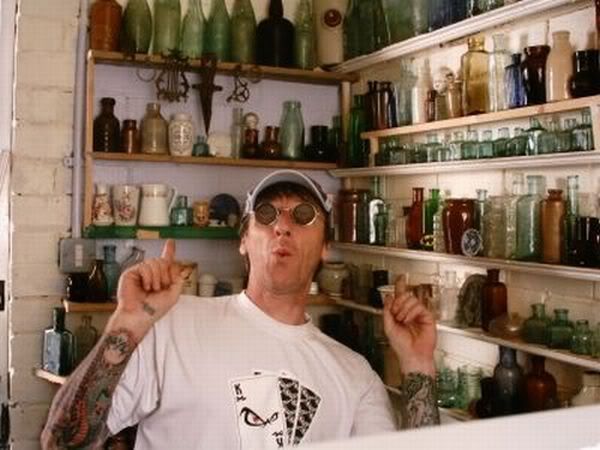


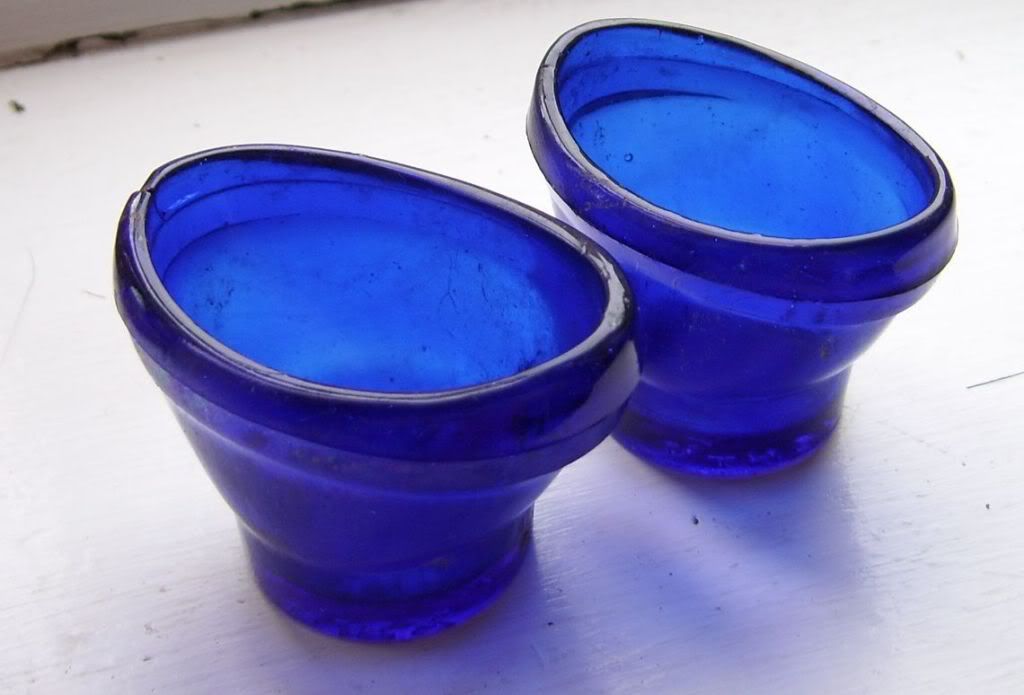


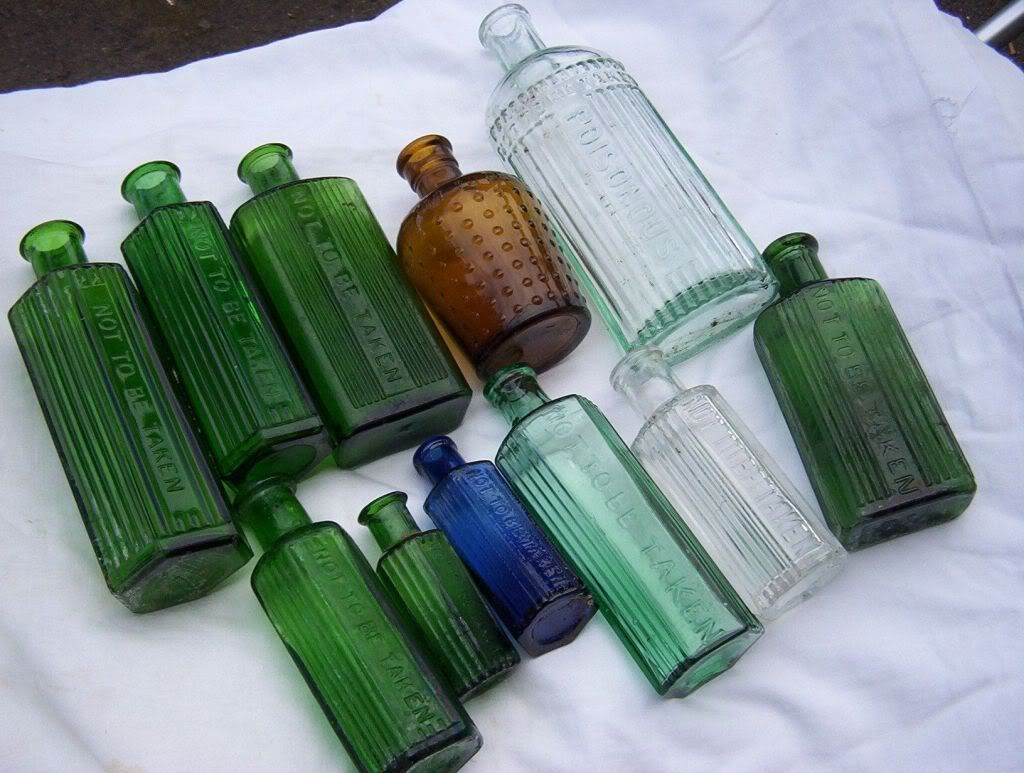
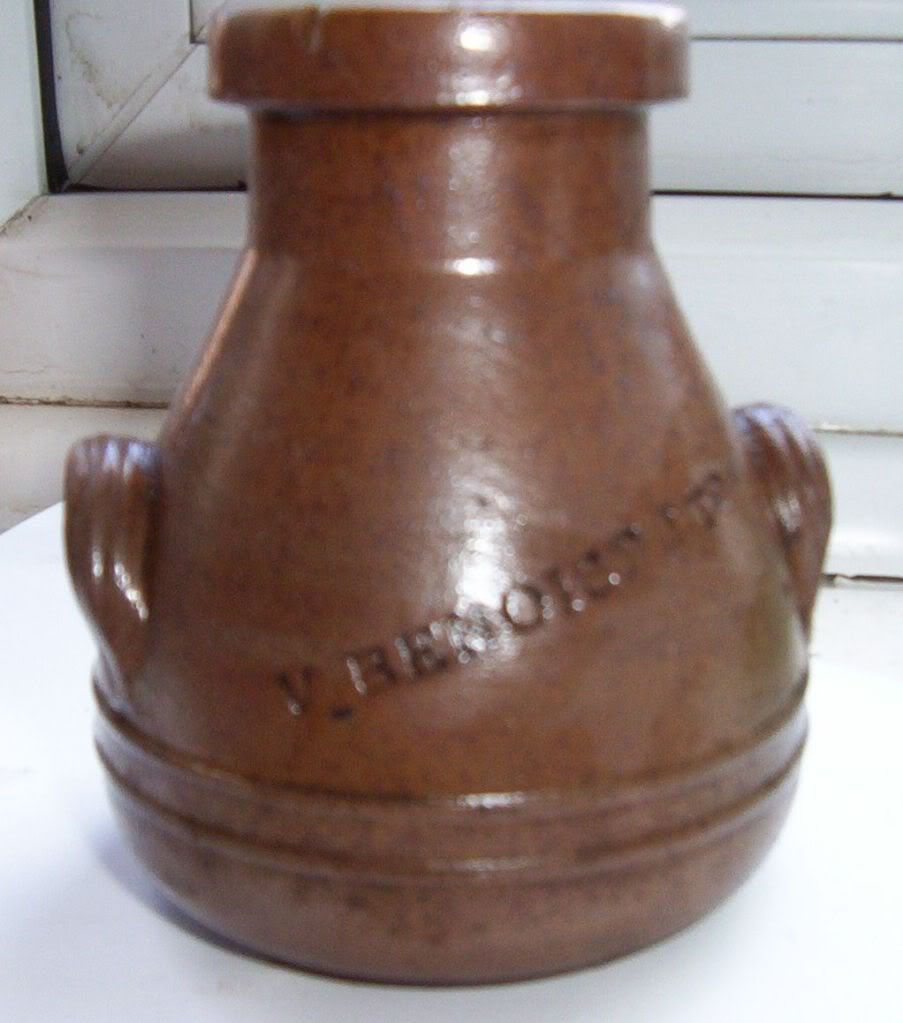
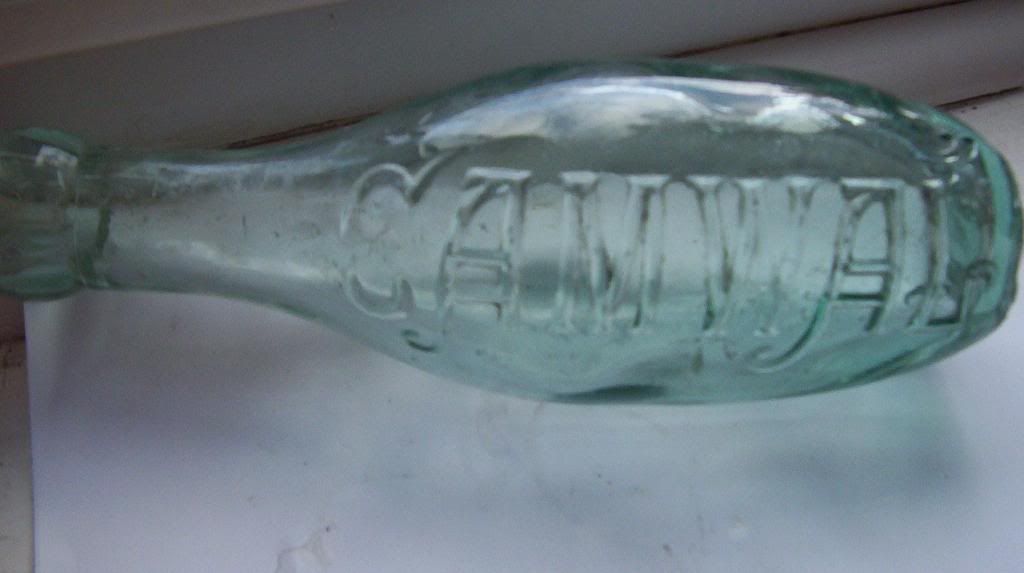
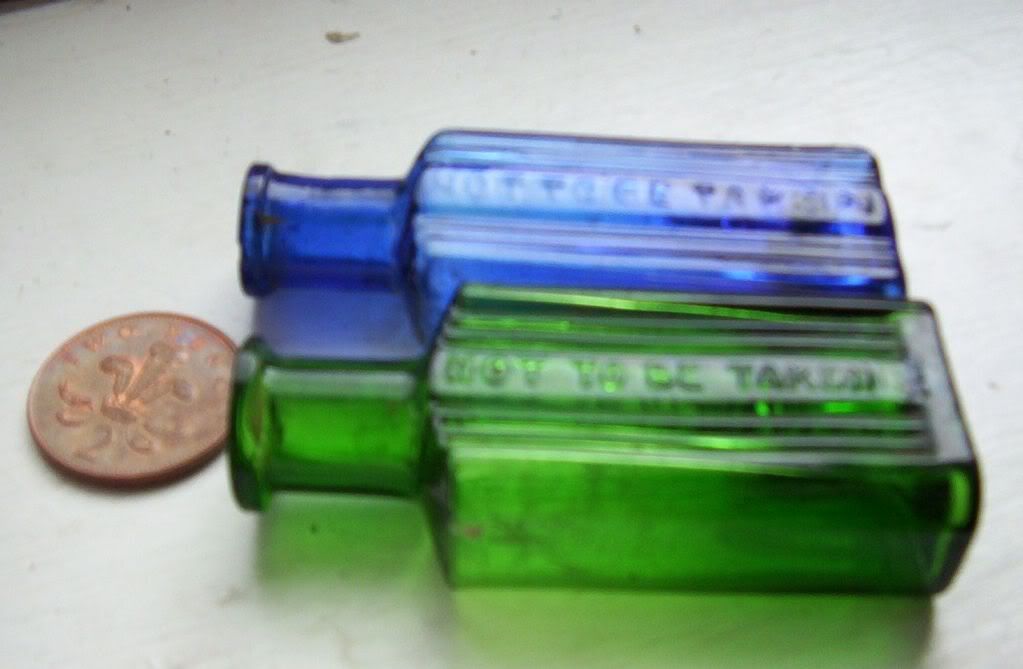
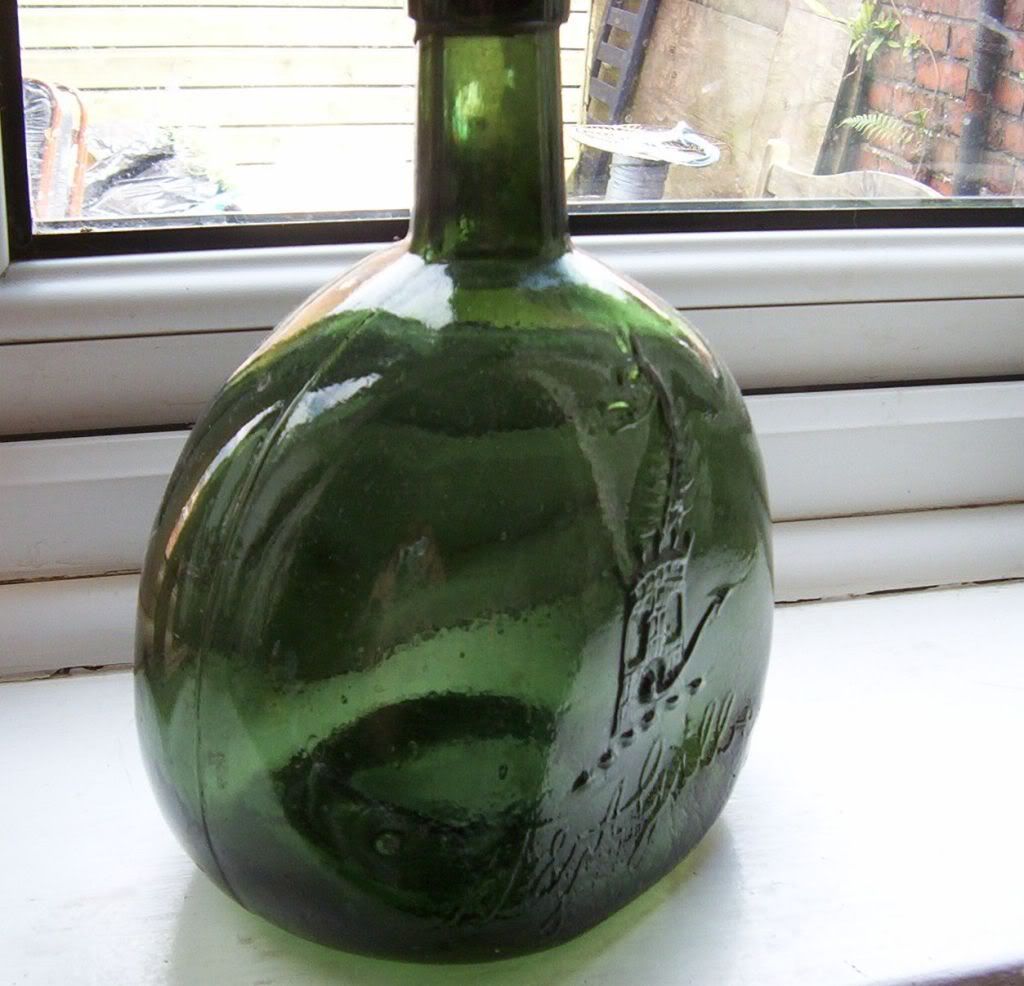
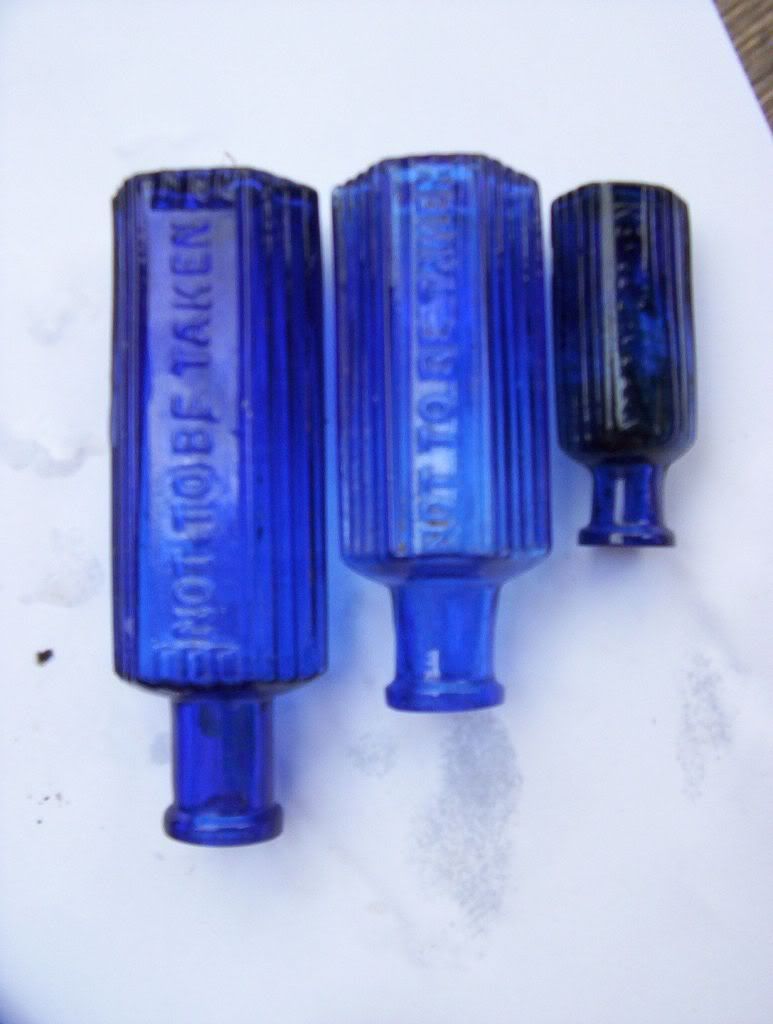





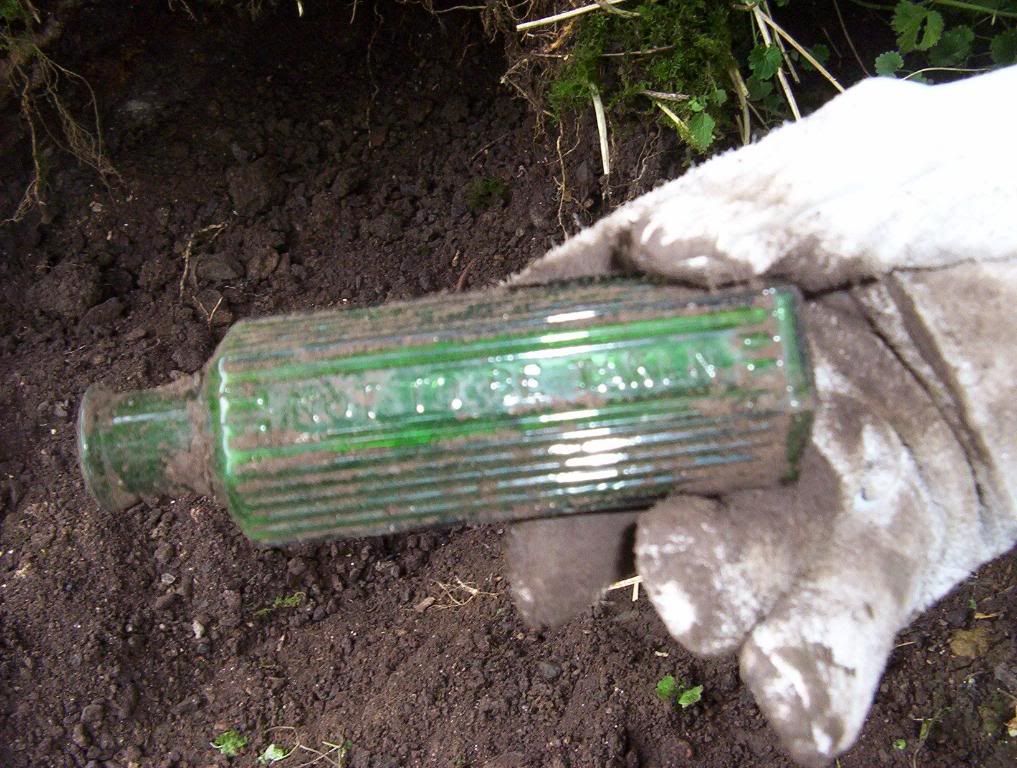


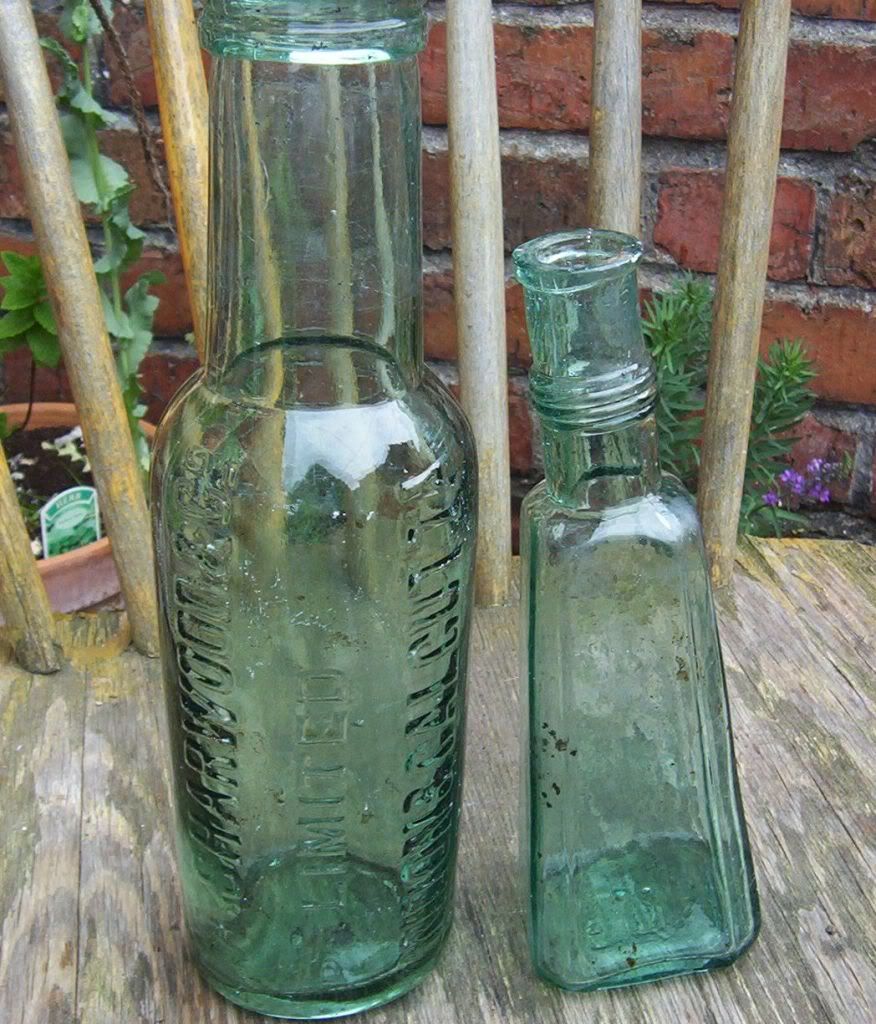
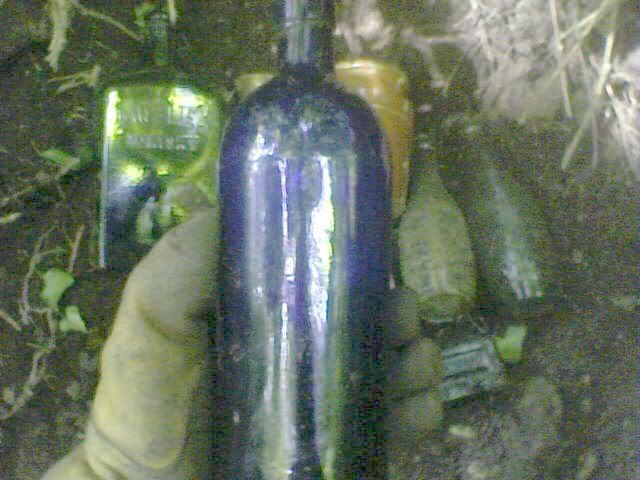
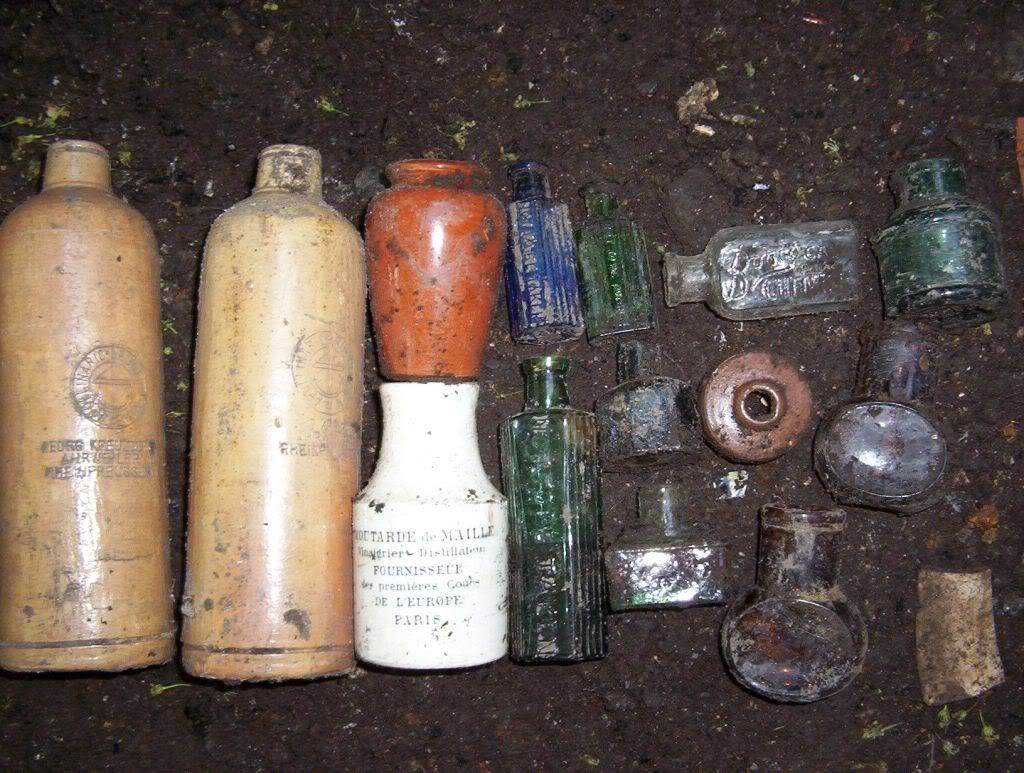

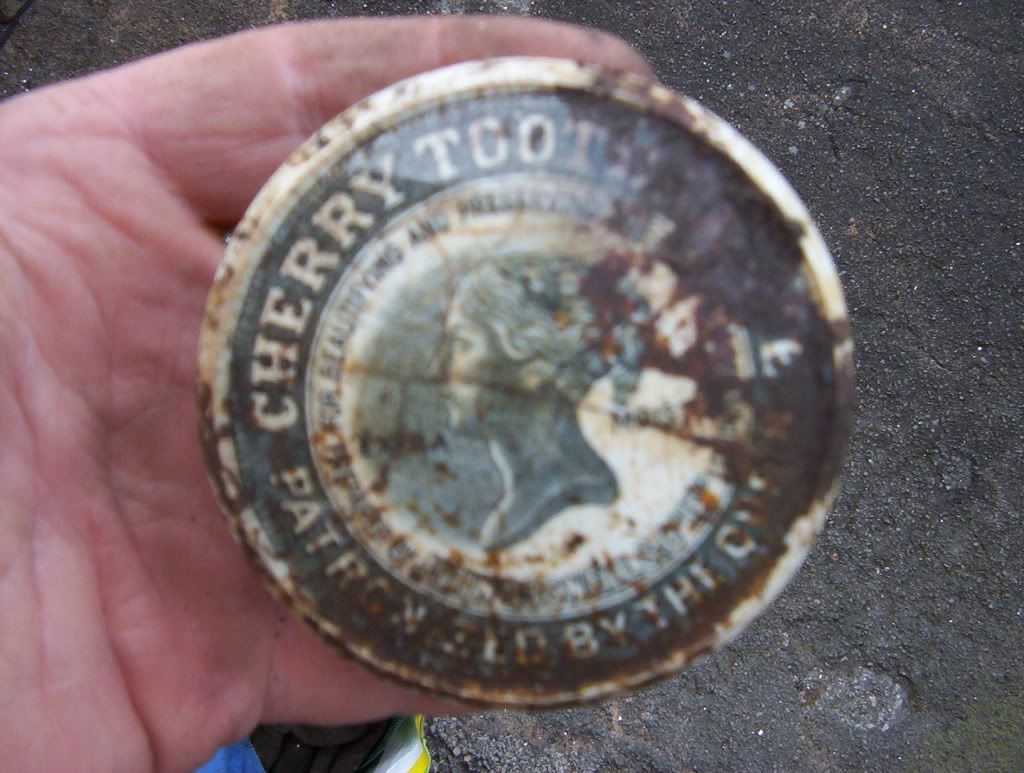
he we go then.....where do we start...the first tip i found was only1950s. it was post world war two, and most of it was broken. but it spurred me on, the most common places you will find a tip, are brickworks/old quarries/next to old gas works/river banks/canal banks/railway cuttings , there are varied types ov tip........firstly you have the town communal tip, these are always massive in size and deep. but dont usually yield much good finds, as the folk were poor........but still worh digging , coz you never know..........next you have the vilage tips, these are a bit better, with more quality finds in.......but not in great quantities.....then you have the cream of the crop, which are grange or manor house tips...these can yield the best fineds, if you can get at them that is lol. for instance, if common fella burnt himself, he would rub goose fat on, and the pot he threw away in the communal tip would be worth no more than a pound, where as the gent from the manor house would buy his cream in a nice pot,,,,,,,these can fetch 600 pound upwards......then you have farm dumps ,these are quite easy to locate,and can be real early..............so as what to look for.....if your walkin along any footpath,and you see slithers of glass and pottery, there sure is a dump near by.....the first signs you will probably see is coal ash....all the years ov barrowing the refuse ,spillage on the way is wat yiur looking for..........its just a matter of following the path , if it ends in a overgrown area with lots of nettles ,your prob on to a winner......elderberry trees r another good sign....they thrive on tips....the tip was never far away from the house or farm, because the servant wouldnt want to push it too far ,,esp in
winter, but far enough to keep away vermin......once the hole were filled, they would cap it with soil/sand, or even bricks and rubble...then normaly they would plant trees on it, so never discount a wooded copse, at the back of a farm /house/or on outskirts of a village.....you can have finds without even digging, because the tree roots over the years would bring items to the surface.........if this happens you can tell the age of the tip without digging..............................so how can you tell the age of a bottle, the early ones as you will know were hand blown,they will have a pontil mark on the base where the blower would have snapped it off.... these bottles wont have any seams... machine made bottles came in about 1870,, and up till about 1910 they were unable to make a bottle including the top, this had to be done in a second stage, a blob of molten glass was added to the top and rolled and shaped...these bottles are known as added or blob tops,, u find these up till about 1910/15......then you have shear top bottles, these look like they have had theie tops broken off,,often with a jagged edge,,these are normaly glass ink or suace bottles...which sold for a penny in victorian times, so it was nt worth the trouble of adding a top,,,they hust bunged a cork in,,,...these date much the same as blob tops...................................and are normaly aqua in colour .....very common..........................................if you find a bottle which is ribbed ,its almost certainly a poison bottle,,,the ribs are there incase you were blind.poisons come in blue/green/aqua.and clear.anywhere from 2/16 ounze...as well as amber .......by the way... bottles pre 1910 are often crudly made air bubbles/mishapen
etc......embossing on abottle is always good,adds value. codd bottles were made up until about 1925... kids would often smash them to get the marble out, but they still do come up whole on a regular basis...blue and greens bieng the sought after, scarboro was famous for the green cod......................if you find a black one .you will be 5 grand the richer my dear...codds also have a blob top,, they were the exception, so if you find one of these the tip could be as late as 1925, where you think it could be 1910,, only other bottles will tell you.......u get hamilton bottles,these are a torpedo shape with a blob top and are pre 1900...ginger beers are another story, some can be worth mega bucks...but still come up in shed loads...
i have actualy been bottle digging longer than metal detecting.
i love the old victorian sites, but in the last few years, i have given my attention to the later sites 1920s/30s. some diggers frown upon these later sites. but i find them facinating, the art deco period was such a colourful era.
the site i am digging at present, which is 1920s, is a huge site , ive been digging it for the last 3 years and have hardly scratched the surface .
its 15 feet deep in some areas.
the reason i dont get out until spring is, the weeds are so high , i can get in, without being seen, not that its an illegal to dig it, but the less eyes that see it the better.
so roll on the spring ,,and out will come shovels and fork,
the first two videos i put together for you tube.
the first is a victorian site . which is a grulling dig. at the best of times.
the second is from the 20s site.
hope u enjoy
http://www.youtube.com/watch?v=x6aZnkAnJvI
http://www.youtube.com/watch?v=JdpgxyfmwI8
































he we go then.....where do we start...the first tip i found was only1950s. it was post world war two, and most of it was broken. but it spurred me on, the most common places you will find a tip, are brickworks/old quarries/next to old gas works/river banks/canal banks/railway cuttings , there are varied types ov tip........firstly you have the town communal tip, these are always massive in size and deep. but dont usually yield much good finds, as the folk were poor........but still worh digging , coz you never know..........next you have the vilage tips, these are a bit better, with more quality finds in.......but not in great quantities.....then you have the cream of the crop, which are grange or manor house tips...these can yield the best fineds, if you can get at them that is lol. for instance, if common fella burnt himself, he would rub goose fat on, and the pot he threw away in the communal tip would be worth no more than a pound, where as the gent from the manor house would buy his cream in a nice pot,,,,,,,these can fetch 600 pound upwards......then you have farm dumps ,these are quite easy to locate,and can be real early..............so as what to look for.....if your walkin along any footpath,and you see slithers of glass and pottery, there sure is a dump near by.....the first signs you will probably see is coal ash....all the years ov barrowing the refuse ,spillage on the way is wat yiur looking for..........its just a matter of following the path , if it ends in a overgrown area with lots of nettles ,your prob on to a winner......elderberry trees r another good sign....they thrive on tips....the tip was never far away from the house or farm, because the servant wouldnt want to push it too far ,,esp in
winter, but far enough to keep away vermin......once the hole were filled, they would cap it with soil/sand, or even bricks and rubble...then normaly they would plant trees on it, so never discount a wooded copse, at the back of a farm /house/or on outskirts of a village.....you can have finds without even digging, because the tree roots over the years would bring items to the surface.........if this happens you can tell the age of the tip without digging..............................so how can you tell the age of a bottle, the early ones as you will know were hand blown,they will have a pontil mark on the base where the blower would have snapped it off.... these bottles wont have any seams... machine made bottles came in about 1870,, and up till about 1910 they were unable to make a bottle including the top, this had to be done in a second stage, a blob of molten glass was added to the top and rolled and shaped...these bottles are known as added or blob tops,, u find these up till about 1910/15......then you have shear top bottles, these look like they have had theie tops broken off,,often with a jagged edge,,these are normaly glass ink or suace bottles...which sold for a penny in victorian times, so it was nt worth the trouble of adding a top,,,they hust bunged a cork in,,,...these date much the same as blob tops...................................and are normaly aqua in colour .....very common..........................................if you find a bottle which is ribbed ,its almost certainly a poison bottle,,,the ribs are there incase you were blind.poisons come in blue/green/aqua.and clear.anywhere from 2/16 ounze...as well as amber .......by the way... bottles pre 1910 are often crudly made air bubbles/mishapen
etc......embossing on abottle is always good,adds value. codd bottles were made up until about 1925... kids would often smash them to get the marble out, but they still do come up whole on a regular basis...blue and greens bieng the sought after, scarboro was famous for the green cod......................if you find a black one .you will be 5 grand the richer my dear...codds also have a blob top,, they were the exception, so if you find one of these the tip could be as late as 1925, where you think it could be 1910,, only other bottles will tell you.......u get hamilton bottles,these are a torpedo shape with a blob top and are pre 1900...ginger beers are another story, some can be worth mega bucks...but still come up in shed loads...





